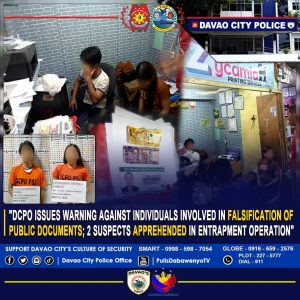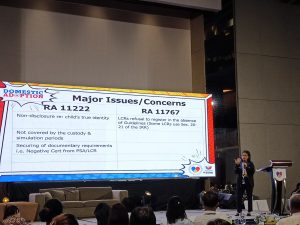Residents of the hinterland sub-village Calinawan (which means a land of peace), once described by government troops as a “factory of landmines,” are now closing ranks to declare a mass revolt against the New People’s Army.
In a post by the Davao Oriental provincial government Facebook page, residents of Sitio Calinawan burned down a flag bearing the emblem of the CPP-NPA-NDF.
Calinawan in Barangay Taocanga is among the country’s geographically isolated areas that belongs to the municipality of Manay, a second-class town in the province of Davao Oriental. The considerable distance from the town’s economic center makes it vulnerable to the influence of the NPA. It also shares boundaries with the municipalities of Lupon in Davao Oriental and Maragusan and New Bataan in Compostela Valley Province.
Seven years ago, the military said they had successfully destroyed the rebel’s “factory of landmines” in Calinawan. Only last year, the military decided to put up a permanent company-sized camp in the area to effectively shoo away the rebels from entering the village again.
Sitio Calinawan in Barangay Taocanga – the farthest sitio in the municipality of Manay, was used to be a stronghold of NPA rebels due to its strategic location which shares boundaries
“This means a lot to us since our peace will no longer be disrupted by violence and the people can now focus more on their livelihoods,” said former barangay councilor Lolito Magbugtong as he recalled the plight of the people in the village who, out of fear, were once forced to abandon their fields and livestock just to attend assemblies called by the armed rebels.
“We will no longer give them support. We are not afraid anymore because we know that the government is behind us,” he added.
Government reaching out
For the military, Sitio Calinawan paints a picture of a true depressed and marginalized area without access to a decent road or electricity.
Lt. Col. Louie Dema-ala, the 67th Infantry Battalion commander, underscored the importance of the government’s effort to reach out to this critical area, which the NPA rebels have been attempting to recover.
“It’s really crucial for us to make the community feel the government’s presence here. It’s high-time that we begin to reintroduce the government to them,” he said.
During the two-day immersion activity, residents were given the opportunity to voice out their community’s shared concerns as they listed proposed solutions to these services gaps. One of the major issues was the lack of accessibility. A hinterland village perched on a mountain surrounded by forests and mountain ranges and without access to a decent road, Sitio Calinawan is virtually cut-off from the rest of the nearby communities.
In order for residents to get to the capital City of Mati, they need to traverse Sitio Bislong in Lupon town and pay P1,500 motorcycle fare – a hefty sum for farmers who only earn meager income out of their farm produce. On the other hand, traversing the alternative route via Barangay Taocanga in Manay would take a day-long hike for the villagers just to get to the village proper.
Apart from the road access, other concerns that emerged were the absence of health services, lack of teachers and classrooms, residents’ non-inclusion to the government’s social welfare program for the poor or 4 Ps, lack of livelihood opportunities, lack of organized associations, absence of farm machineries such as corn sheller and abaca shredder, and farm inputs, among many others.
Bridging the Gap
Considering that Sitio Calinawan has no electricity, the provincial government provided solar panels to the community
For the road, the Department of Public Works and Highways and the Provincial Engineer’s Office are set to deploy heavy equipment to pave the four-kilometer road from Sitio Bislong to Sitio Calinawan.
Other interventions that the Task Force promised to deliver are training for abaca propagation, disease-control and nursery, livestock and fishery interventions, housing, skills training, high-value crop production, deployment of a Barangay Health Worker, organizing of barangay association, and many more.
On the other hand, the idea for exploring small-scale mining through application of Minahan ng Bayan (People’s Mines) has been taken into account considering that Sitio Calinawan has enormous reserves of precious metals such as gold. Residents say that they are open to the idea wherein the community can benefit and not the illegal mining operators.





